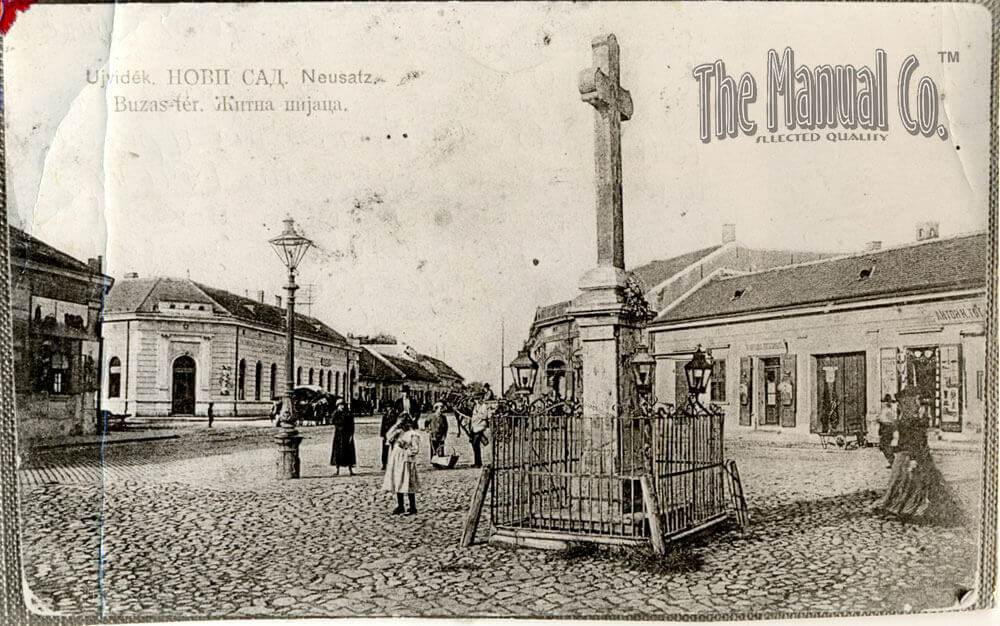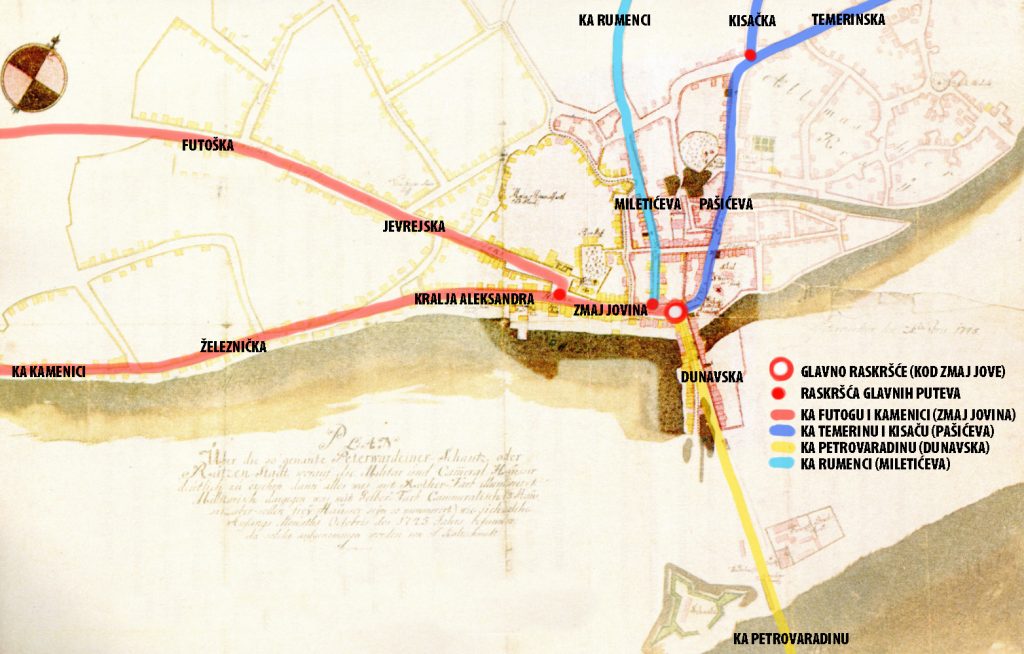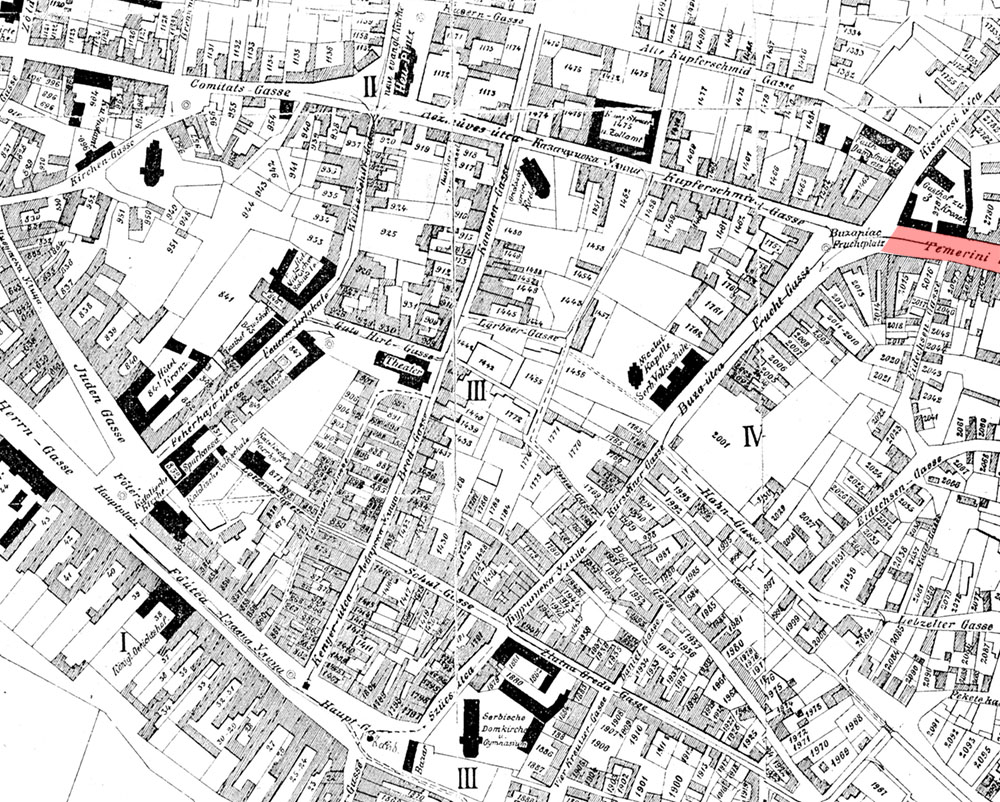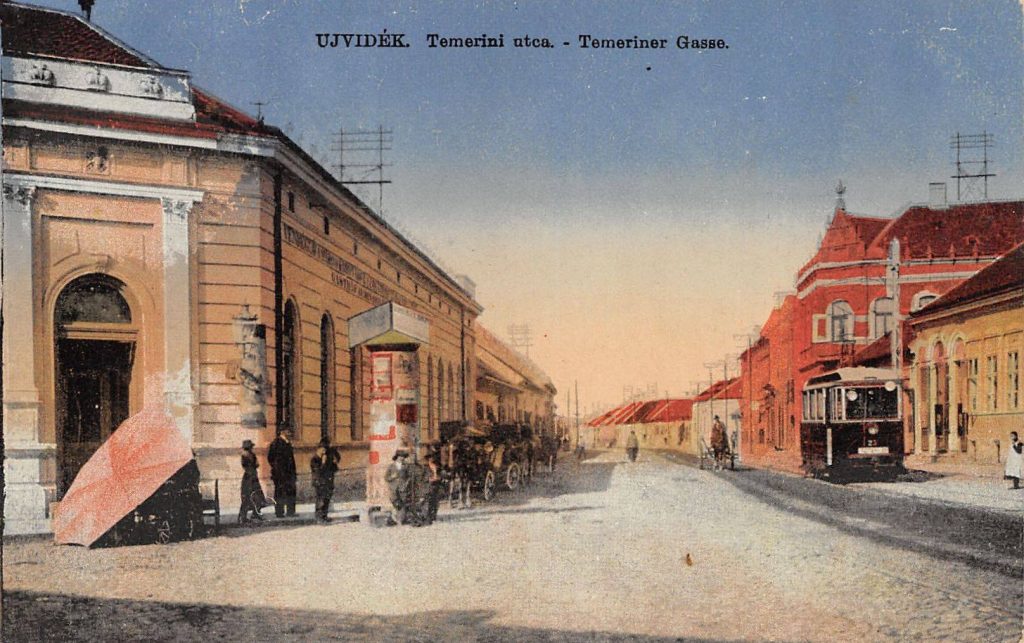TEMERINSKA STREET

Temerinska Street is on one of the three main roads, at the crossroads of which Novi Sad was built. The direction of Temerinska, through Temerin, leads by the Imperial road to Szeged and further to Budapest. In the picture above, we can see the crossroads where the road from Pašićeva, ie Marija Trandafil Square (former Zitni trg) forks towards Temerin and Kisac.

As we can see, Novi Sad was built at the crossroads of 3 roads that met at the Zmaj Jova’s monument in front of the bishop’s palace. From the crossroads to the west, through Zmaj Jovina (Main Street), there is a road to Futog and Kamenica, which diverge on today’s Trg Slobode, at the City Hall, to the left (Kralja Alesandra Street) and to the right (old Jevrejska and Futoška Street). From the crossroads to the south, through Dunavska Street, there was a road to Petrovaradin over the pontoon bridge and further to Belgrade, and to the north, through Pašićeva, a road to Temerin (Temerinska Street), and further to Budapest. At the end of Pasiceva street, there used to be an old Inn called “At Three Crowns”, just as the road turned to Temerin, and also the road to Kisac (Kisacka Street) used to separate here. Somewhere in the middle of Zmaj Jovina Street, to the north, another old road separates – the road to Rumenka which leads through Miletićeva Street, then Vojvode Bojovića and Kralja Petra, to Rumenačka Street.

On Suter’s plan of Novi Sad from 1889, we see that the old Inn “Kod tri krune” on the very corner of Temerinska and Kisacka was originally marked in black. There used to be a cross at this crossroads, which we can see in a 1900 photograph at the top of the page. There was also a execution site in this area, where criminals were hanged.

This is one of the streets used by trams from September 30, 1911 until the same day in 1958, when it was abolished. Line One, known as the white line from Futoška Kapija to Temerinska Street, passed through Temerinska. This line went from the spa and hospital along Futoška Street, Jevrejska, Zmaj Jovina next to Vladičin dvor and then along Pašićeva Street and Temerinska to the canal, where the line ended.

Throughout the history of the city, Temerinska Street changed its name only once, during the occupation in WWII, when the name was changed to “April 13th, 1941”, and after the liberation, the name that this street has always borne – Temerinska Street, was restored.



